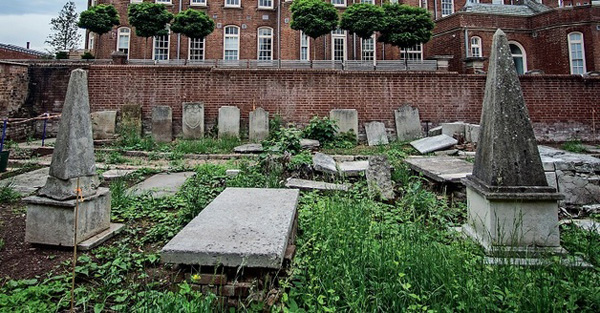FAO Exeter Dissenters – our Blogs are, understandably normally about accounting. However, I have been reliably informed that there is more to life than accountancy. I know that this is hard to believe, but I try to be open minded!?!
We therefore thought it would be good to add the occasional blog about something else.
Our main office is in Exeter. Like many English cities, it has a medieval core, albeit much of it was destroyed in the Baedeker Bombings of the 2nd World War. However it has a much longer history, predating the fortification of the city by the Romans (who named it ISCA) in around 55AD.
I was taking a lunchtime constitution the other day as part of my New Year’s Resolutions and whilst walking to see Bull Meadow, I passed a small, walled, graveyard. There was a plaque on the wall that explained it as being The Dissenters Graveyard 1748 – 1854. I stopped to learn more.
“Dissenters” was a term used from the 17th Century onwards to describe those English Protestants who did not accept the authority of the Church of England. They formed separate congregations, often referred to as “Meetings”. They also rejected the Book of Common Prayer. As this was a requirement for Anglican burials, the Dissenters had to establish burial grounds of their own.
In 1747, three local Meetings leased land near Bull Meadow for such a graveyard, with the first burial being of Mary Green (the Minister’s wife), in 1748.
Overall, there were nearly 2,000 burials there, with the last burial being that of Emma Tompson in 1854. The site was owned by the Dissenting groups until the mid-1980s. Since then, it has passed through the hands of a number of property developers. However, the council refused to allow planning permission which has allowed it to have been acquired (quite recently), by the Exeter Dissenters Graveyard Trust.
After the restoration of Charles II, it was difficult for Dissenters to enter the established professions, so many of them entered commerce, industry and the sciences. Occupants of the graveyard include wool and cloth merchants, a banker, two lawyers and five accountants.
Arguably, (by their insistence on freedom of expression and belief), the Dissenters have played a major part in establishing the freedoms most of us enjoy today. In the early 19th century, Dissenters made up nearly 40% of the Protestant population in Exeter and so they were a significant minority.
100 yards further down the lane, lies a dedicated Jewish graveyard, also now owned by the local Jewish Community (purchased in 1977 for £750).
The preservation of both of the above sites was only made possible by the willingness of Exeter City Council to refuse planning permission for exhumation and re-development and to allow the sale of the freeholds to the supporting charities. I find it encouraging to see the long history of tolerance that recognises the rights of peoples within a community to hold different beliefs, to maintain their individual identity but still be part of that community.
When drafting a set of financial statements, although they are all governed by a single community (a set of Financial Reporting Standards), it is our job as accountants to ensure that each set of accounts properly reflects the individual nature of the business or organisation for which the accounts are reporting.
It is interesting to note that the original purchases of the land for the above graveyards all seemed to be for leasehold, not freehold. If an organisation owns the leasehold of a graveyard, I suppose establishing an amortisation policy could have two meanings!?!
P.S. When going out at lunch today – have a look at what historical legacy you are walking past.
You can find more information on the Dissenters Cemetery here




